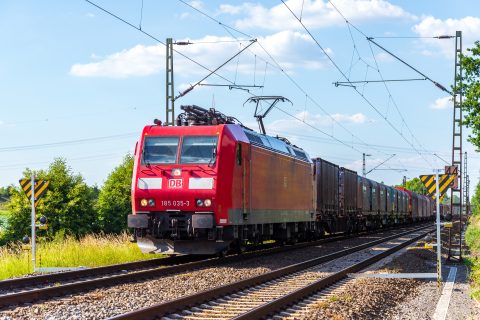UK Midlands Connect spotlights the need for increased regional capacity

In the UK, the key to the movement of rail freight is an efficient Midlands network. A huge proportion of the nation’s commerce passes through the regional infrastructure. Train planners may well agree but will also scratch their heads at making the Midlands work. For transport body Midlands Connect, which develops and recommends regional transport policy, there’s only one way forward: increased capacity.
There is one key thing that we have learned from the first Midlands Connect Freight Week. It is that major transport projects provide the biggest possible economic and social benefits for the region and the rest of the UK, too. Midlands Connect Freight Week has just finished, and while it may not have been the most high-profile festival of the year, it did highlight the need to create more capacity for freight on roads and railways throughout the Midlands of England. That is something rail operators have been lobbying for almost as long as there have been railways in this traditional workshop of Britain.
Rail is critical to the future prosperity of the region
Midlands Connect may well agree that it is not the highest profile of England’s seven sub-national transport bodies. However, the pre-statutory body has raised its profile among the rail freight community. The inaugural Freight Week was just completed (13-17 November) and was intended to do just that. As the transport arm of the Midlands Engine (a government-mandated economic development body), the team at Midlands Connect has been working with local authorities, local enterprise partnerships (LEPs), and Chambers of Commerce, as well as critical infrastructure agencies, including Highways England and Network Rail. It also involves the Midlands’ two international airports (Birmingham International and East Midlands Airport). With all those stakeholders involved, it may be difficult for rail freight interests to be heard.

Nevertheless, the executive board at Midlands Connect is well aware that rail is critical to the region’s future prosperity. “Key rail routes go through the Midlands providing through routes for goods arriving from ports in the south”, says Maria Machancoses, CEO of Midlands Connect. “Within the Midlands, these networks allow the sector to service key manufacturing bases. Rail networks allow construction materials, food, mail and other goods to be delivered effectively, such as Alstom, JCB, Nestle and Rolls Royce along the A50/500 corridor, tech companies along the A46, or ensuring timely deliveries from the Lincolnshire Food Valley.”
Strategic direction on multi-modal interchanges
The inaugural Freight Week follows on from the publication of the Midlands Connect Freight Routemap, which led to the establishment of an all-embracing Freight Forum for the Midlands. That document is over a year old, and the freight landscape has changed significantly. On the plus side, there have been opens and developments – such as the expansion of East Midlands Gateway – but also the implications of the cancellation of HS2, the high-speed rail project which will now terminate in Birmingham, depriving the network of much-needed extra capacity on routes to the north, including the West Coast Main Line, already the busiest mixed-traffic route in Europe. It was announced during Freight Week that a second issue of the Freight Routemap, with further modelling and analysis work, will be completed next year.

“Through trade and investment, the Midlands contributes 90 billion pounds [105 billion euro] annually to the UK economy”, added Maria Machancoses. “In order to keep its global competitiveness, the demand for the movement of goods is ever-increasing, including the need for reliable connections to international gateways. With this rising demand also comes key environmental challenges, placing the freight industry at the cusp of a green technical revolution. By working with partners and businesses across the sector, we can better understand and plan alternative fuels provision and give strategic direction on multi-modal interchanges between road, rail, air, and ports.”





